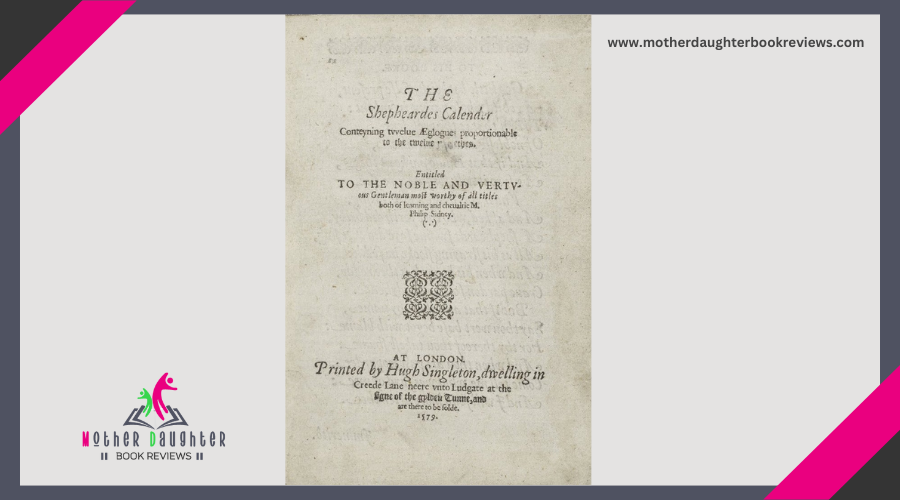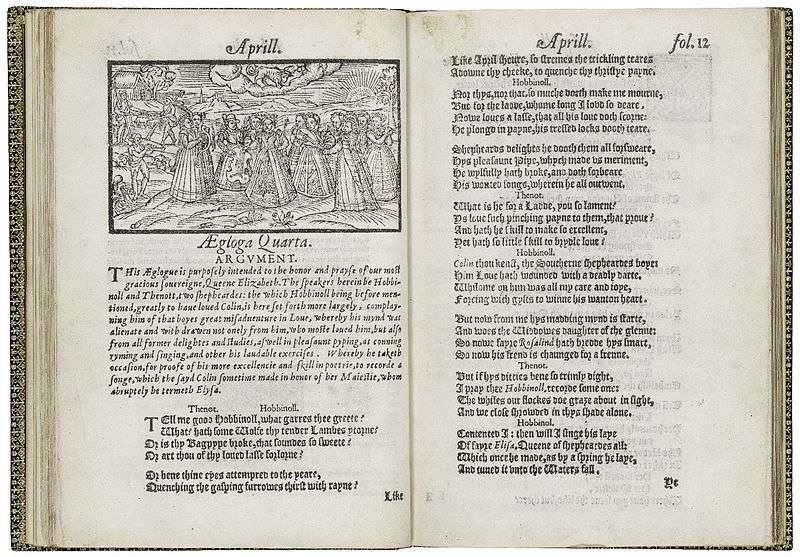A Journey Through Seasons in The Shepherd’s Calendar

Edmund Spenser (author), Hugh Singleton (printer), Shepheardes Calender Title Page, CC BY -SA 4.0
If you're curious about Elizabethan country life and its poetic rhythms, “The Shepherd's Calendar” offers an enchanting glimpse. Originally rooted in 18th-century pastoral traditions, this classic captures the essence of each season through vivid imagery and authentic dialect. You'll experience winter's serene charm, the awakening of spring, summer's bounteous fields, and autumn's rich harvest. Festivities like May Day and harvest festivals come alive, showcasing the strong bond between rural communities and nature.
Origins of The Shepherd's Calendar
The poet, John Clare, drew inspiration from the English countryside, where he spent much of his life. Clare wasn't just an observer; he lived the life he wrote about, making his verses resonate with authenticity. He aimed to preserve the nuances of rural existence, from the changing landscapes to the daily chores of shepherds.
If you look closely, you'll notice how Clare's use of dialect and vivid imagery adds layers of depth to his poetry. He didn't just write for the elite; his work speaks to anyone who loves nature and the simple, yet profound, beauty of the countryside. The Shepherd's Calendar isn't just a collection of poems; it's a timeless tribute to the pastoral world that continues to inspire readers across generations.
January: Winter's Quiet Charm
How does January, with its frosty mornings and tranquil landscapes, capture the essence of winter's quiet charm? Picture yourself waking up to a world blanketed in snow, where every breath you take is a visible puff of mist. The air is crisp, and there's a stillness that seems to hush the world. You step outside, and your boots crunch on the frozen ground. The trees, stripped of their leaves, stand as silent sentinels, their branches coated with a delicate layer of frost.
In "The Shepherd's Calendar," January's rhymes evoke this serene beauty, painting scenes of pastoral life in winter. You find yourself engaged in the simple joys of the season—watching smoke curl from chimneys, feeling the warmth of a roaring fire, and savoring the quiet moments that winter offers. The shepherds, though enduring the cold, find comfort in the routine of their work and the promise of spring yet to come.
January's charm lies in its simplicity and the way it invites you to pause and appreciate the slower pace. It's a time for reflection and finding beauty in the quiet, frosty hold of winter.
Spring Awakening: March and April
As winter's quiet charm begins to wane, the preliminary signs of spring emerge in March and April, heralding a season of renewal and awakening. You'll notice the days growing longer, and the sun's warmth coaxing life back into the frozen earth. Fields once blanketed in snow now reveal tender green shoots, while the primary blossoms of crocuses and daffodils add splashes of color to the landscape.
In Elizabethan times, this shift was captured beautifully in the Shepherd's Calendar. You can almost hear the rustle of new leaves and the chirping of birds returning from their winter sojourns. Farmers begin to plow their fields, preparing the soil for the year's crops. Lambs frolic in the meadows, symbolizing new beginnings and the cycle of life.
The air is filled with the fresh scent of budding flowers and the promise of warmer days. You'll see neighbors cleaning and repairing, shaking off the lethargy of winter. Gardens are tilled, and seeds are sown, each act a hopeful gesture toward the bountiful months ahead. The Shepherd's Calendar reminds you that March and April are times of hope and hard work, setting the stage for the lush growth that follows.

Edmund Spenser, Aprill, from the Shepheardes Calendar, CC BY-SA 4.0</ a>
Summer's Bounty: June and July
June and July burst forth with an abundance that showcases the full splendor of summer. As you wander through the countryside, you'll notice fields teeming with life. The sun hangs high, casting a golden glow over ripening wheat and barley. Farmers work tirelessly, ensuring that the crops receive enough water and care. It's a time of growth and anticipation, as the promise of a bountiful harvest starts to take shape.
In the gardens, you can see the fruits of the season coming into their own. Juicy strawberries, raspberries, and early apples are ready for picking. The air is filled with the sweet scent of flowers in full bloom, and the buzzing of bees is a constant reminder of nature's busy workers. You might find yourself plucking fresh vegetables like peas, beans, and cucumbers, perfect for a summer salad.
The Shepherd's Calendar captures this vibrancy through its seasonal rhymes, painting a picture of a world where every element has its part to play. As you read, you're transported to a time when the rhythm of life was closely tied to the land, making summer a season of both beauty and bounty.
Autumn Harvest: September
August's lingering warmth starts to fade, making way for September's cooler breezes and the unmistakable signs of autumn. As you step outside, you'll notice the once lively green leaves beginning to turn shades of red, orange, and yellow. This month is essential for the harvest, when the fields yield their bountiful crops, ready for gathering.
In the Elizabethan countryside, September is a time of lively activity. You'd see farmers working tirelessly, collecting wheat, barley, and oats. The air is filled with the rhythmic sounds of scything and threshing. You might also spot families picking apples and pears, preparing for the coming winter months. The children, excited by the change in season, often help gather nuts and berries, adding a playful element to the hard work.
The Shepherd's Calendar captures this essence perfectly, portraying the harmonious blend of labor and nature's generosity. You'd find yourself engaged in vivid descriptions of the countryside, where each stanza echoes the importance of this harvest season. As you read, you'll appreciate the timelessness of these rural scenes, reminding you of the cycles of nature that continue to sustain and inspire.
Rural Festivities and Traditions
In the heart of the countryside, rural festivities and traditions come alive, creating a lively tapestry of community and culture. You'll find yourself engaged in celebrations that echo centuries-old customs, passed down through generations. Picture a village square teeming with people, colorful banners waving in the breeze, and the joyful sounds of music and laughter filling the air.
May Day kicks off spring with maypole dancing, where children weave intricate patterns with bright ribbons. The harvest festival, a time of gratitude, sees villagers gathering to share a bountiful feast, celebrating the fruits of their labor. During these events, you'll often hear traditional songs and rhymes, each telling a story of the land and its people.
Throughout the year, other festivities like the midsummer bonfire, where flames light up the night sky, and wassailing, a winter tradition to bless the apple trees, keep the community spirit alive. These gatherings aren't just about merrymaking; they strengthen bonds and preserve a shared heritage. As you participate, you'll feel a profound connection to the rhythms of nature and the enduring spirit of rural life. The Shepherd's Calendar captures these moments, painting a vivid picture of Elizabethan country living.
Conclusion
You'll notice that these rhymes have influenced not only literature but also modern celebrations. Traditions like May Day, harvest festivals, and even certain Christmas customs trace their roots back to these early depictions of rural life. By preserving these customs in rhyme and song, the Elizabethans guaranteed that future generations would keep the spirit of these celebrations alive.
Moreover, "The Shepherd's Calendar" has inspired countless poets and authors. When you read works by John Clare or Thomas Hardy, you'll see echoes of these seasonal verses. They've helped shape the literary portrayal of rural England, making it a timeless subject.




